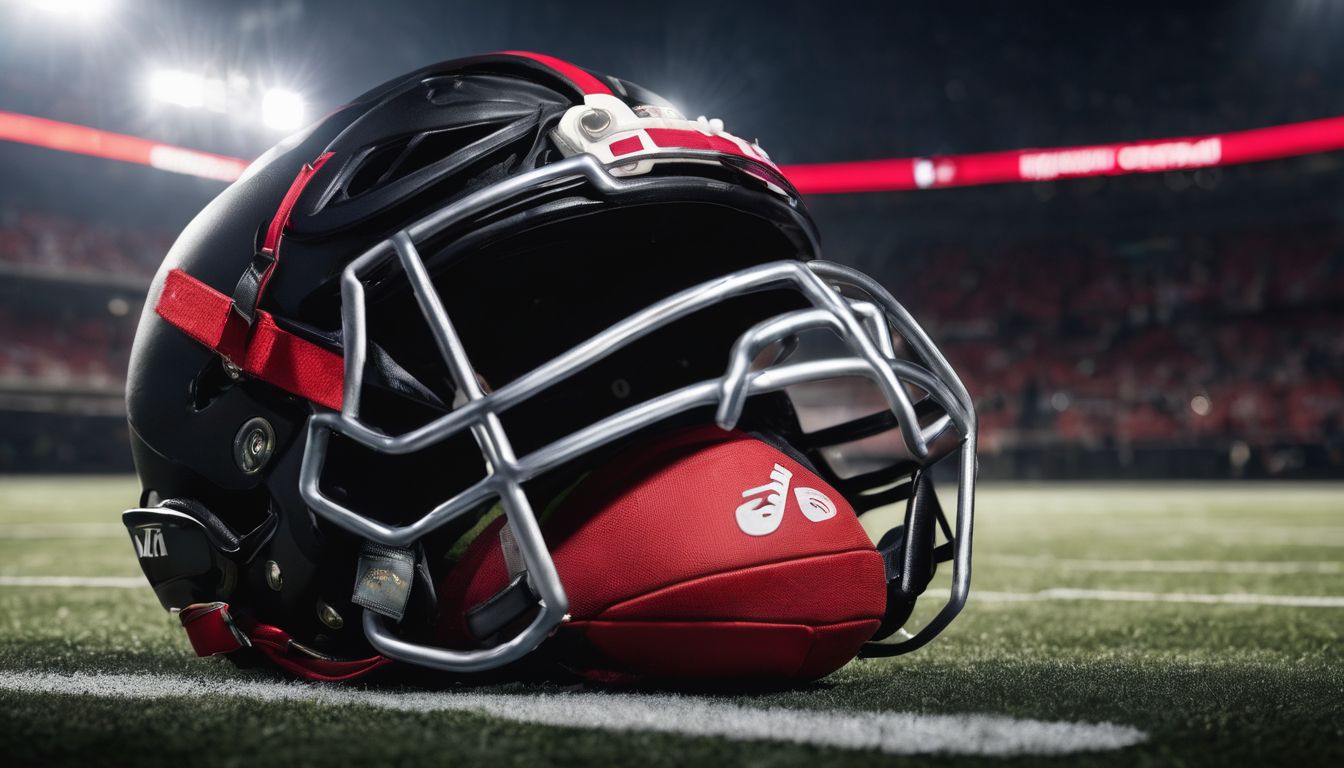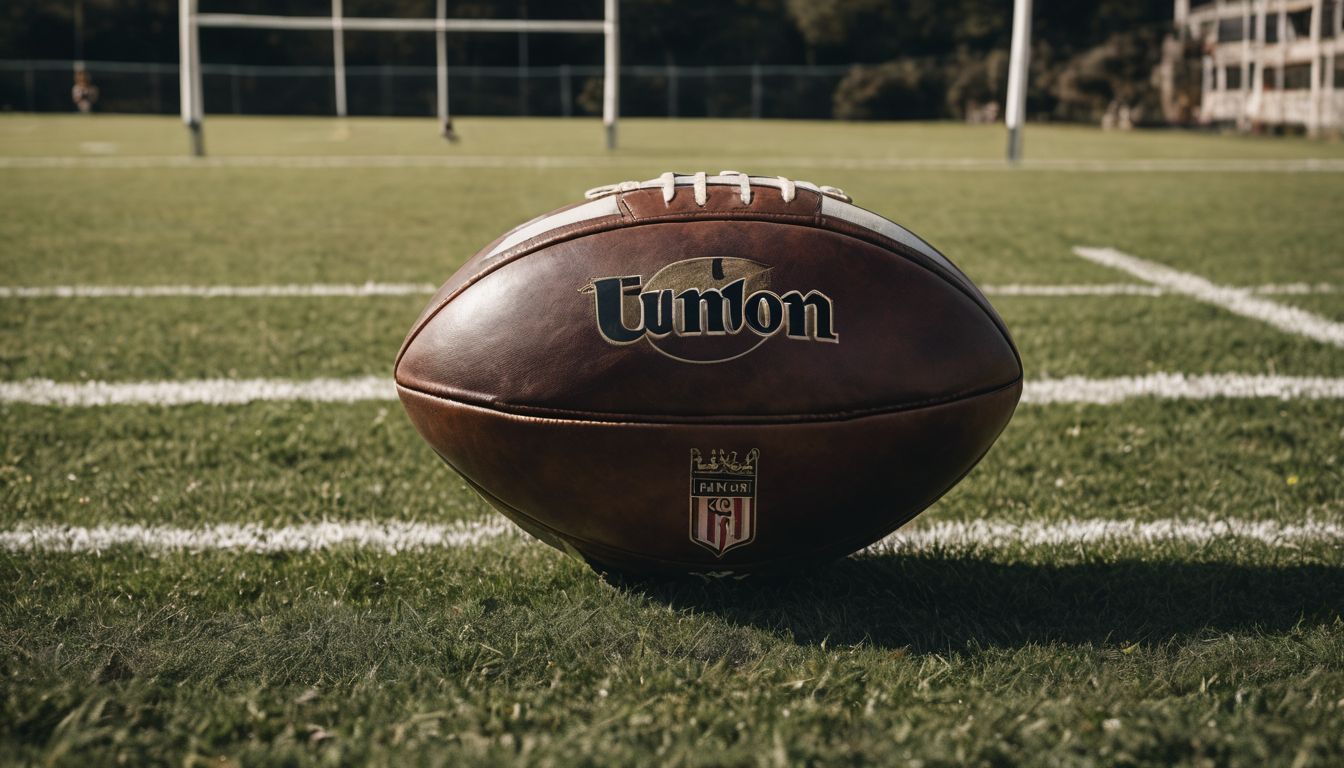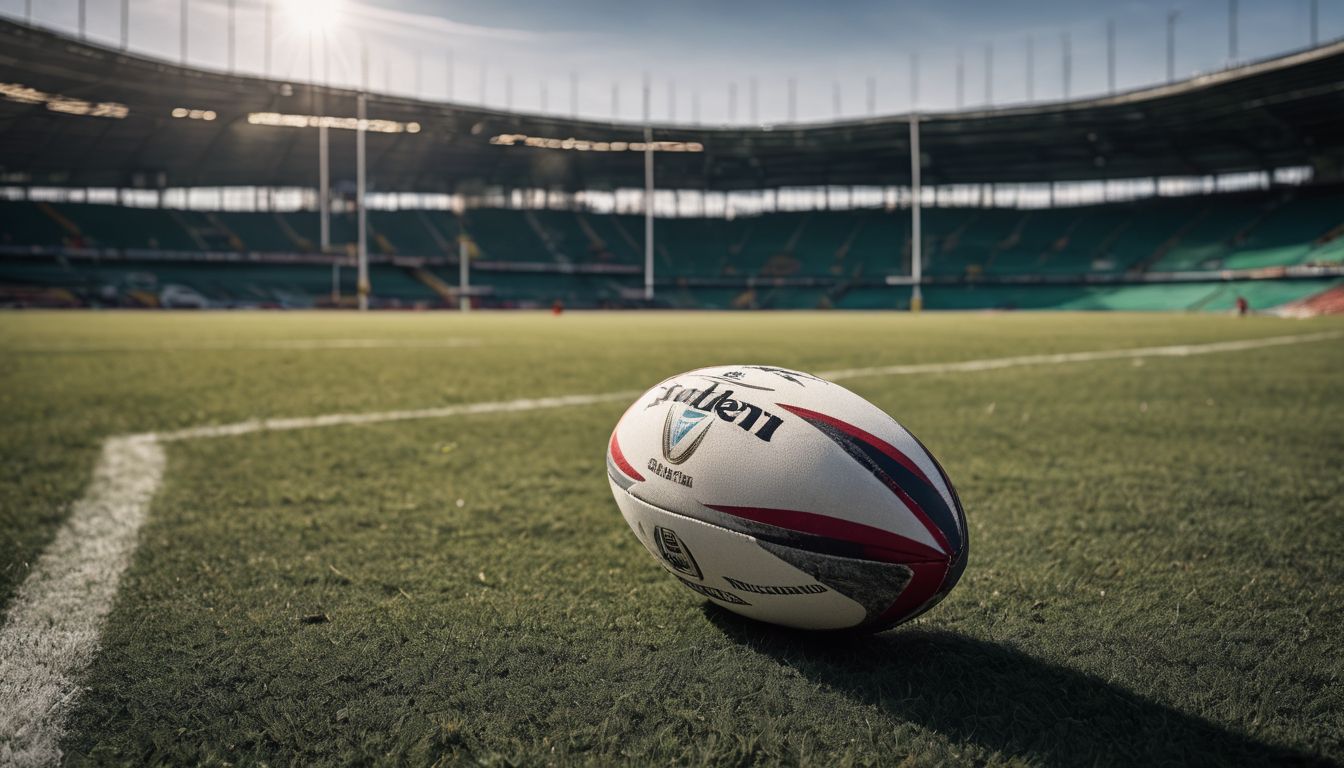Ever wondered what makes the five-eighth role so crucial on a rugby league team? The five-eighth, sporting jersey number 6, is pivotal to directing play and setting up attacks. Our blog post will break down this dynamic position, shedding light on its importance and what sets it apart from others on the pitch.
Dive into the world of the agile playmaker; let’s explore the heart of rugby league strategy together.
Key Takeaways
- The five – eighth, wearing jersey number 6, is a vital playmaker in rugby league, known for their roles in directing attacks and being the “second receiver” on the field.
- This position requires players to have strong passing and running abilities, as well as excellent decision-making skills to coordinate plays with the halfback.
- Known by different names globally such as stand-off or fly-half, the five-eighth role has evolved from its origins in New Zealand rugby union into a key strategic position within the team.
- Notable five – eighths like Wally Lewis and Brad Fittler have significantly influenced rugby league through their exceptional playing style and strategic contributions to matches.
- A talented five – eighth can greatly impact their team’s success by creating scoring opportunities, organising defence and offence, which also helps shape the overall style of play in rugby league.
Overview of Rugby League Positions
Rugby league positions are divided into backs and forwards, each having specific roles on the field. The players are assigned jersey numbers based on their position, with the five-eighth wearing number 6.
Names and numbering
In the fast-paced world of rugby league, each player has a specific role indicated by their jersey number. The five-eighth proudly wears the number 6, marking them out as one half of the crucial halves partnership on the field.
This position boasts some versatile skills – they’re typically strong passers and runners, equipped to make quick decisions that drive the team forward.
The term “five-eighth” is unique; it originated in New Zealand but has become widespread in Australia and neighbouring nations. Each time this player touches the ball, they are pivotal as a ‘second receiver,’ ready to create attacking opportunities or pivot into defence mode when required.
Their connection with other key players like the halfback ensures that plays are executed with precision and strategic finesse.
Backs and Forwards
The rugby league team is split into two main groups: the backs and the forwards. The backs, including the five-eighth, are typically faster and more agile players responsible for leading attacking plays and scoring tries.
On the other hand, the forwards are generally larger, stronger players who focus on gaining ground through tough runs and providing support to their teammates in both attack and defense.
Together, these two sections of the team work cohesively to drive forward as a unit.
The Five-Eighth Position
Also known as the stand-off, the five-eighth wears jersey number 6 and is known for being a strong passer and runner. They are often referred to as the “second receiver” on the team.
Also known as stand-off
The five-eighth position in rugby league is also known as the stand-off. This player wears jersey number 6 and serves as the second halfback on the team. A versatile role, the stand-off needs to be a strong passer and runner, often taking on the responsibility of being the “second receiver” to support attacking plays effectively.
This position originated in New Zealand rugby union as a new midway link between the half-back and three-quarters, evolving into a crucial role for directing attacking play and orchestrating offensive strategies for the team.
The stand-off works closely with the halfback, organising both attacking plays and defensive strategies. Good decision-making skills are critical for this role, along with effective communication to execute strategic moves during play.
Wears jersey number 6
Also known as stand-off, the player in the five-eighth position wears jersey number 6. This individual is an integral part of a rugby league team and is responsible for orchestrating attacking plays, passing, running, and working closely with the halfback to manage offensive strategies effectively.
The unique skills and positioning of this player make them a key asset in creating opportunities and executing strategic plays to score points for their team.
A strong passer and runner
The five-eighth, also known as the stand-off, is a key player in a rugby league team. Wearing jersey number 6, they are characterised by their strength in passing and running the ball down the field.
As an agile and versatile player, the five-eighth acts as the “second receiver,” capable of making split-second decisions to advance attacking plays and create opportunities for scoring.
This pivotal position requires excellent decision-making skills and effective communication with teammates to coordinate strategic moves on the field. In addition to being adept runners and passers, successful five-eighths must possess a deep understanding of the game, enabling them to read plays effectively and execute well-planned attacking moves that will score points for their team.
Referred to as “second receiver”
A strong passer and runner, the five-eighth is also known as the “second receiver” in a rugby league team. This position demands effective decision-making skills and strong communication with teammates for orchestrating attacking plays, organising defence, and creating scoring opportunities.
The designation “second receiver” highlights the player’s crucial role in receiving passes from the halfback or distributing them further to execute strategic offensive moves on the field.
History and Origin of the Name
The name “five-eighth” originated in Australia, while the position is referred to as standoff or stand-off in other countries, and has evolved over time to become a key player in rugby league teams.
To learn more about the history and origin of this important position, keep reading!
Known as lock, loose forward, or stand-off in different countries
In different countries across the world, the five-eighth position in rugby league is known by various names. For example, in England and some other European countries, this player is called “stand-off“.
Meanwhile, in Australia and New Zealand, the position may be referred to as “five-eighth”, and in other areas it could be known as “lock” or “loose forward“. These varying names reflect the global nature of rugby league and its diverse terminology.
The name for this position can vary depending on the country’s unique traditions and naming conventions. Whether they are referred to as stand-off, lock, loose forward, or five-eighth, the key attributes and responsibilities of this player remain consistent across different rugby league teams worldwide.
Evolution of the position
The five-eighth position in rugby league has undergone significant evolution over the years. Originally known as the stand-off or outside half, this pivotal role was first introduced in New Zealand rugby union during the early 1900s.
It emerged as a new midway position that bridged the gap between the traditional half-back and three-quarters, revolutionising attacking play and strategic team dynamics. As the game developed, so did the responsibilities of the five-eighth, shaping them into an integral part of directing attacking strategies and orchestrating offensive plays on the field.
In some countries like Australia and New Zealand, this position is referred to as stand-off or five-eighth; elsewhere it may be called outside half. The evolution has made it clear that effective communication, strong decision-making skills, adaptability, agility, and a deep understanding of gameplay are essential for excelling in this dynamic role.
Role and Responsibilities
The five-eighth works closely with the halfback and plays a vital role in creating and executing attacking plays. They must be able to pass, kick, run, and defend effectively.
To learn more about the important position of the five-eighth in rugby league and its impact on the sport, keep reading!
Works closely with the halfback
The five-eighth position works closely with the halfback to coordinate the team’s attacking plays and ensure effective communication on the field. They collaborate in decision-making, organising the team’s defence, and creating strategic offensive opportunities.
Together, they form a crucial partnership that drives the team’s performance and directs its gameplay towards scoring points.
Their collaboration extends beyond passing and running as they also work together to read and anticipate the game. This close working relationship is essential for executing well-coordinated attacks and solid defensive strategies, ultimately contributing to their team’s success on the field.
Important in creating and executing attacking plays
Playing a crucial role in directing the team’s attacking strategy, the five-eighth is instrumental in orchestrating offensive plays and creating scoring opportunities. Working closely with the halfback, this agile and strategic player takes on the responsibility of organising and executing attacking moves.
With strong passing, kicking, and running abilities, they play a pivotal role in setting up their teammates for scoring chances while also being adept at reading the game to exploit opposition weaknesses.
A successful five-eighth not only dictates the tempo of attacking plays but also demonstrates sound decision-making skills to outwit opponents. Their effective communication with teammates ensures seamless execution of strategic attacks, making them an indispensable asset in propelling the team towards offensive success.
Must be able to pass, kick, run, and defend effectively
The five-eighth position demands proficiency in passing, kicking, running, and defending. This player plays a crucial role in executing attacking plays and must demonstrate exceptional skills in distributing the ball with precision to create scoring opportunities for the team.
Additionally, the five-eighth needs to have strong kicking abilities to strategically position the team on the field and execute effective kicks for goal-scoring or territorial advantage.
Furthermore, being able to swiftly run through defenses and defend effectively are essential attributes of this versatile player position.
Famous Five-Eighths
Some notable players who have excelled in the five-eighth position include Johnathan Thurston, Darren Lockyer, and Wally Lewis. These players have had a significant impact on their teams and the sport as a whole.
Notable players who have excelled in this position
Some notable players who have excelled in the five-eighth position include Wally Lewis, considered one of the greatest rugby league players of all time. Another standout is Brad Fittler, renowned for his exceptional ball-handling and playmaking abilities.
Both these players have left a lasting legacy in the sport, showcasing exemplary skills and strategic brilliance on the field.
Their impact has inspired future generations of five-eighths to hone their passing, kicking, and decision-making skills to become key playmakers for their teams. These influential figures have set a high standard for aspiring players looking to excel in the dynamic role of a five-eighth in rugby league.
Impact on the team and the sport
Notable players who have excelled in this position have left a lasting impact on their teams and the sport as a whole. The fly-half’s ability to direct attacking play, create strategic opportunities for teammates, and execute plays to score points is crucial for the team’s success.
They work closely with the scrum-half to organise the team’s offence and defence, making them pivotal in determining the outcome of matches. Their skill set influences how the game unfolds, impacting not only their team’s performance but also shaping the overall style of play in rugby league.
The presence of an exceptional fly-half can inspire other players and contribute to an exciting brand of rugby that captivates fans around the world. Their leadership on the field can influence entire teams and even transform strategies used within the sport itself, leaving a significant mark on rugby league.
Conclusion
In conclusion, the five-eighth position in rugby league, also known as stand-off, holds a crucial role in directing attacking plays and strategising the team’s offensive movements.
With jersey number 6 and often referred to as the “second receiver,” this player is a strong passer and runner who works closely with the halfback to orchestrate the team’s gameplay.
Originating from New Zealand rugby union, the name “five-eighth” signifies their midway connection between the half-back and three-quarters. This pivotal position demands effective communication, decision-making skills, and strategic vision for creating scoring opportunities for the team.
FAQs
1. What does a five-eighth do in rugby league?
In rugby league, the five-eighth is a key player who acts as the second receiver from the scrum and often controls the direction of play.
2. Is the five-eighth position important in a football team?
Yes, within a rugby league football team, the five-eighth plays an essential role by making strategic decisions and assisting the halfback in directing attacks.
3. How is being a five-eighth different from other positions?
A five-eighth has different responsibilities than other players on their team; they support both defence and attack strategies by collaborating closely with halfbacks to guide gameplay.
4. Can someone playing as a fiveeighths also be involved in scoring?
Certainly! Players in the fiveeighths position can shape offensive plays to create scoring opportunities for themselves or teammates during matches.
















